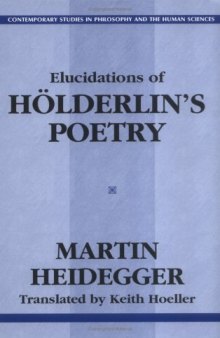 جزییات کتاب
جزییات کتاب
It is well known that Martin Heidegger (1889-1976), perhaps the twentieth century's greatest philosopher, did not complete the publication of his magnum opus, ''Being & Time'', first published in part in 1927. The promised volumes were withheld, Heidegger said, because the philosophical language of his time failed to capture the essence of what he wanted to say. During the 1930s and '40s Heidegger published little, lending an additional air of mystery to his famous ''Turning'' (Kehre) from the language of classical philosophy to that of poetry. Why did Heidegger turn from philosophy to poetry? Why did he choose Friedrich Holderlin (1770-1843), perhaps Germany's greatest, yet most difficult, poet? How can the poet help the thinker to complete his thoughts? How can Holderlin's poetry help Heidegger to think the truth of being?The answers to these and many other questions are contained in this important book, which contains six essays on Holderlin that Heidegger published between the 1930s and the early 1970s. This long-awaited English translation is based on the latest edition (1996) of the book to appear in Heidegger's ''Collected Works'' and features several appendices, including a unique glimpse into Heidegger's study, showing his notes written in the margins of Holderlin's poetry. The original German of several of the poems has also been included. Both the translator and the German editor have added an introduction and epilogue, respectively. This book, a singular dialogue between one of Germany's greatest thinkers and one of its greatest poets, will be of interest not only to philosophers, but to literary critics as well.



 دانلود کتاب
دانلود کتاب

 جزییات کتاب
جزییات کتاب





 این کتاب رو مطالعه کردید؟ نظر شما چیست؟
این کتاب رو مطالعه کردید؟ نظر شما چیست؟
